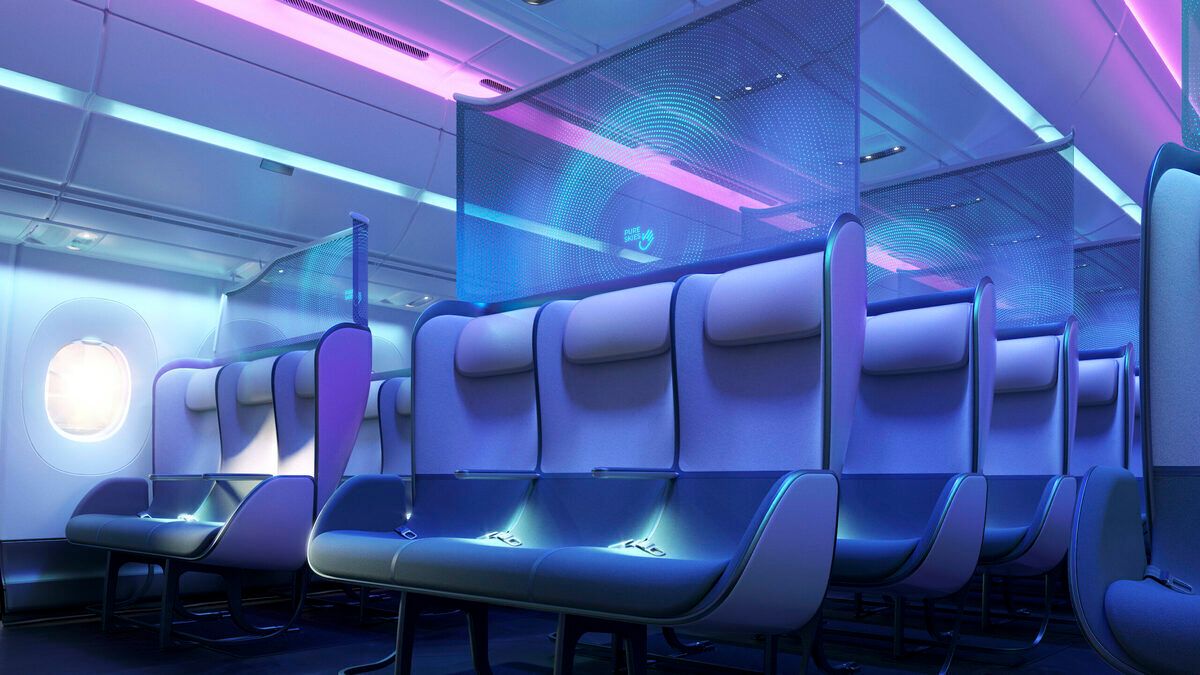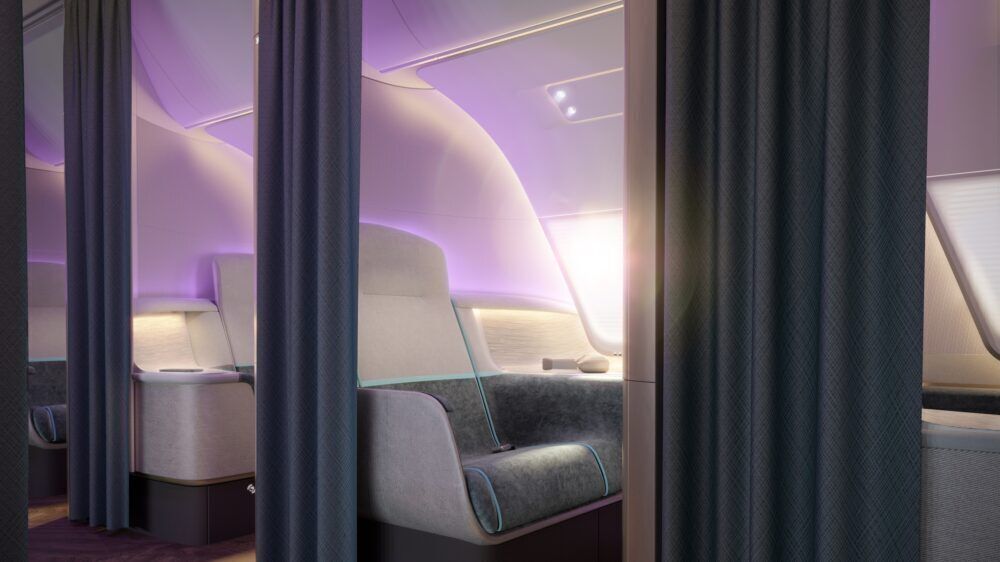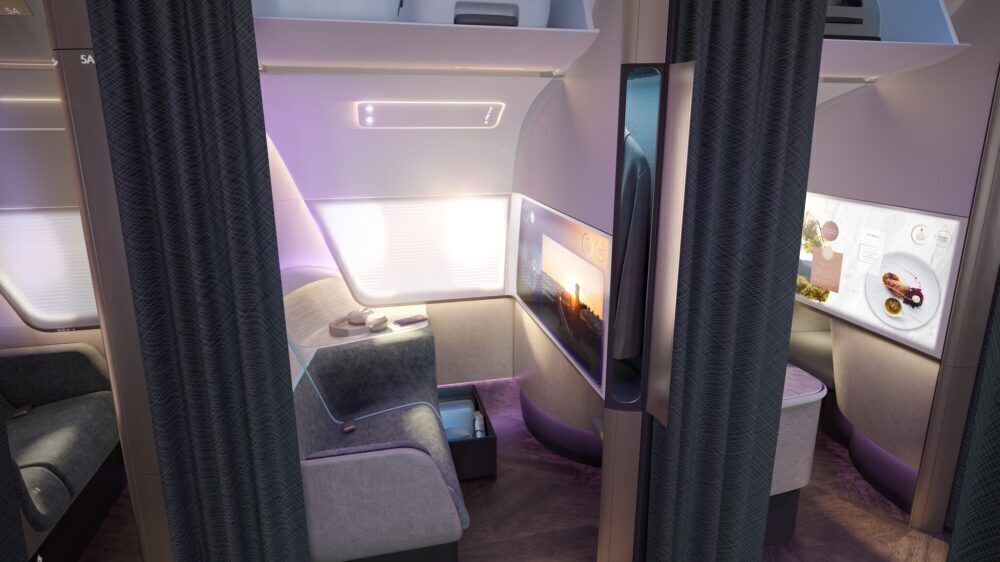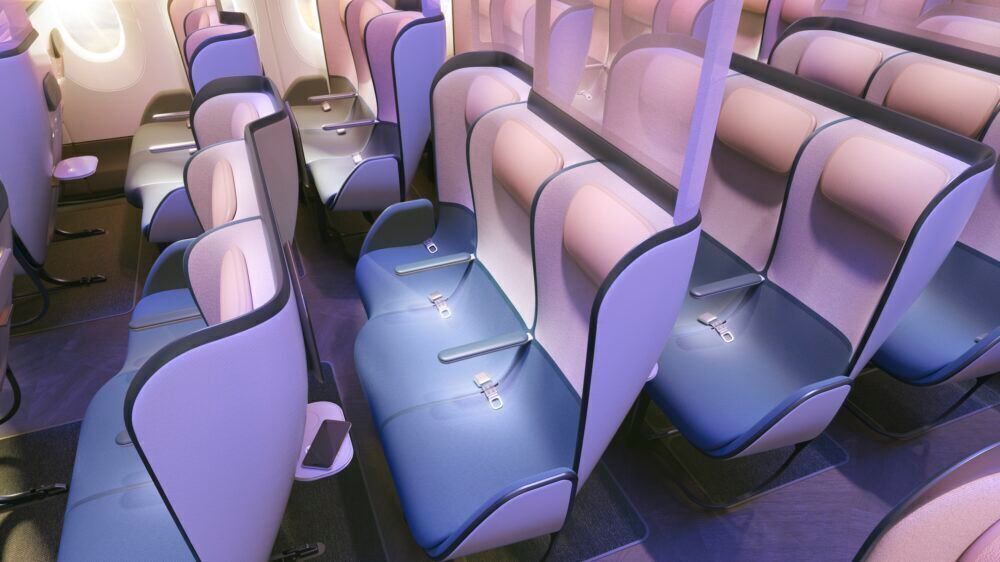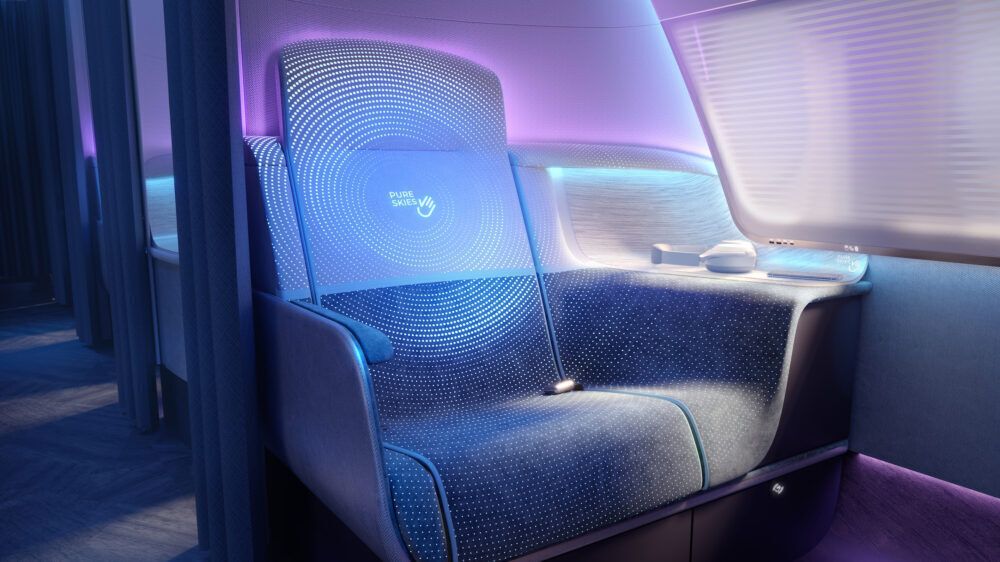The pandemic has shown that the priorities of air travelers of the future might not be limited to comfort and good food. Passengers also want hygiene, personal space and a more touch-free experience, three things that PriestmanGoode has endeavored to embrace with its Pure Skies concept. Shortlisted for a Crystal Cabin Award, could this give us clues to how we’ll all fly in the future?
Looking to the future of air travel
London-based design house PriestmanGoode has previously brought us a multitude of aviation goodness, from edible meal trays to the stunning Airspace cabin for Airbus. Now, their vision for the future of air travel has been shortlisted in this year’s Crystal Cabin Awards and gives us a glimpse into what aircraft interiors of the future could be.
While airlines are currently focused on protecting their capital and recovering from the crisis, keeping one eye on the future is still critical. PriestmanGoode understands that it can take years to develop and certify new cabin products, and as such, it’s important to look beyond the current tumult and into a better future for all.
Its ‘Pure Skies’ concept brings together a suite of innovations that endeavor to reimagine both economy and business class cabins. Bearing in mind the needs of the post-pandemic traveler and airline, Pure Skies seeks to develop the travel experience on three key themes: Personal space, hygiene, and a touch-free journey.
Nigel Goode, Co-founding Director at PriestmanGoode, noted the importance of this ambitious project, saying,
“This latest work from the studio represents pragmatic innovation. With the benefit of over 30 years’ experience, we know how to harness design to achieve long-term positive change. We’ve looked ahead to imagine future scenarios and taken into account new passenger behaviours driven by the global pandemic to ensure our designs can be implemented within a few years and will meet user and airline requirements for many years ahead.”
So, what’s inside a Pure Skies cabin? Let’s take a look.
Pure Skies Rooms
Doing away with the concept of ‘class’ is the first radical stage of this reworking of the premium cabin. Calling the space instead ‘Pure Skies Rooms,’ the concept endeavors to create a more private experience by providing travelers with fully enclosed personal space. The seat is partitioned by floor-to-ceiling curtains, giving complete separation from the rest of the cabin.
The seat itself has been designed to have minimal split lines and seam welded fabrics. This eliminates dirt traps, making it easier for airlines to clean between services. Not only that, but the materials themselves are antimicrobial, giving an additional boost to hygienic operations.
To enable a completely touch-free experience, the Rooms embrace smart device control for the IFE system. Passengers will be able to control what they watch, what they order, and even the light and temperature of the room from their phone or tablet. Every passenger also has their own personal overhead storage and wardrobe, preventing cross-contamination from other passenger’s belongings.
Stay informed: Sign up for our daily and weekly aviation news digests.
Pure Skies Zones
In what we know as the economy cabin, PriestmanGoode has brought us Pure Skies Zones. Again, this space has had more of a makeover than just a new name.
The most noticeable design change is a staggered arrangement, with two seats together and the third slightly further back. This enables those traveling together to sit close to one another, while solo travelers get a bit more personal space. Every other row, a dividing screen helps to provide separation within the cabin, reducing transmission of noise and germs around the space.
These seats are also designed to be free from dirt traps, with seam welded antimicrobial fabrics used again and solid seatback shells with no gaps in the construction. To further remove gaps and places for dirt to build up, the seats come with no IFE screens or seatback tray tables. Instead, passengers can choose to watch the IFE on their own devices or via a hired tablet, while trays are clipped on direct from the meal trolley.
Most interestingly, all the seats in the Pure Skies concept could be impregnated with photochromic and thermochromic inks, which react to UVC light and heat cleaning methods. This would provide visual reassurance of the cleanliness of the cabin on boarding, which would then disappear once the passenger was settled.
What do you think of the Pure Skies concept?

